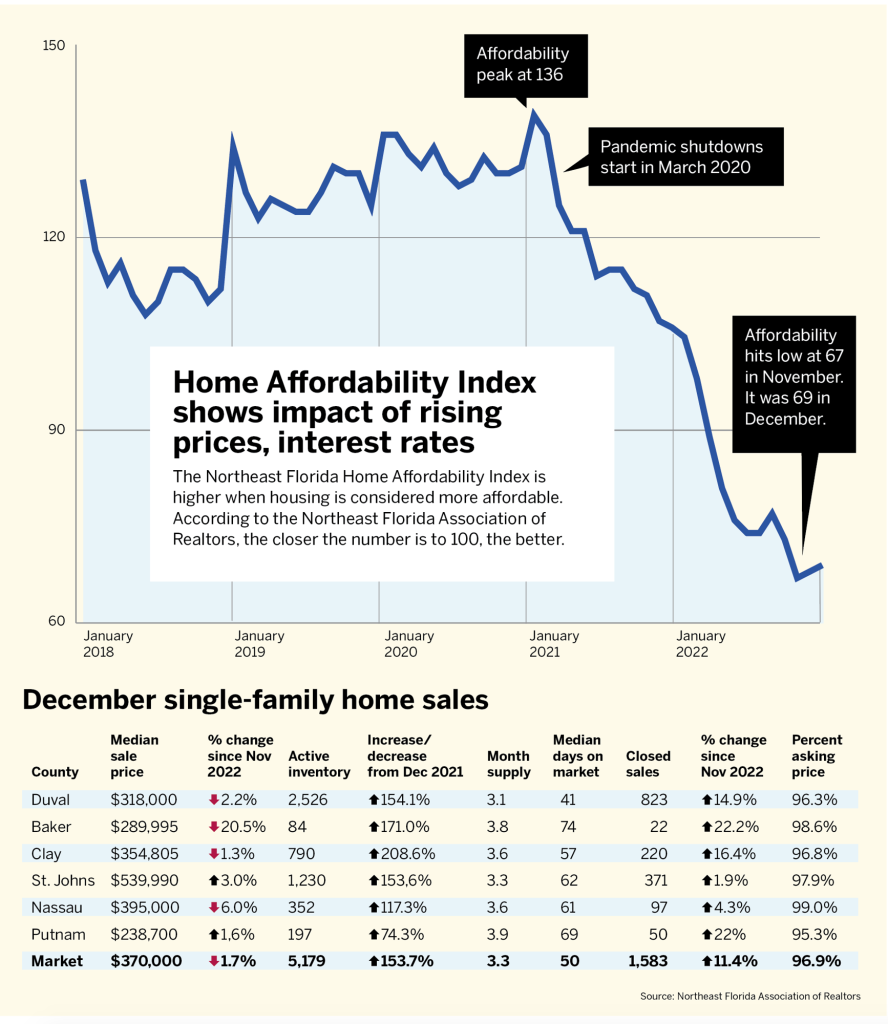
Jacksonville is listed among 5 biggest “U.S. Boomtowns during pandemic,” according to LendingTree which ranked and scored the 100 largest metros in three main categories: people and housing, work and earnings and business and economy.
Southern metros dominated the list of the biggest boomtowns, with Florida, North Carolina, Texas and Virginia occupying eight of the Top 10 ranks.
Key findings
- Southern metros dominate the list of the biggest boomtowns. Metros in Texas, Florida, North Carolina and Virginia occupy eight of the top 10 spots in the LendingTree boomtown rankings.
- Among the 100 largest metros, Austin, Texas, has boomed the most during the pandemic. The number of housing units here jumped 12.9% between 2019 and 2021 — the second-highest among the 100 metros — and the population jumped by 5.6% in the same period — the third-highest — giving the central Texas metro the highest people and housing score.
- We head west for the second-biggest boomtown: Provo, Utah. The north-central Utah metro outpaced Austin in our work and earnings category, led by its No. 1 growth in workforce size (8.4%). In other categories, Provo had the greatest population growth between 2019 and 2021 (7.2%) and the second-biggest jump in gross domestic product (13.2%) in the same period.
- We head back South for our next-biggest boomtown: Lakeland, Fla. Lakeland had top-five finishes in individual metrics in all three categories: housing growth (7.7%), median earnings (16.3%) and new employer identification numbers (118.4%).
- The most sluggish metro — despite being known for its wonderful beaches — is Honolulu. The Hawaii metro finished last in our work and earnings and business and economy categories with the biggest jump in the unemployment rate (119%), the third-smallest jump in median earnings (1.7%) and the third-biggest decrease in annual GDP (5.3%) between 2019 and 2021. Joining Honolulu at the bottom are Hartford, Conn., and Los Angeles.
Many of the biggest boomtowns are in the South
For the biggest boomtowns in the U.S., look to the South. Of the top 10, eight are in Texas, Florida, North Carolina and Virginia.
Top 10 biggest boomtowns
| Rank | Metro |
|---|---|
| 1 | Austin, TX |
| 2 | Provo, UT |
| 3 | Lakeland, FL |
| 4 | Boise, ID |
| 5 | Jacksonville, FL |
| 6 | North Port, FL |
| 7 | Durham, NC |
| 8 | Raleigh, NC |
| 9 | Charlotte, NC |
| 10 | Virginia Beach, VA |
“People — especially work-from-home employees — are leaving for warm weather and lower taxes,” LendingTree chief credit analyst Matt Schulz says. “Especially for Florida and Texas, those two factors have been instrumental in driving a lot of the growth.”
If you have real estate questions or interested in buying or selling a home in Northeast Florida, please contact me at (904) 307-8998 or email williamvasana@kw.com. As a local area expert in Jacksonville Florida, I offer the highest level of professional services, luxury condo savvy, extensive residential experience, and intensive knowledge about Jacksonville neighborhoods and the overall market in the pre-construction and luxury development. I specialize in residential homes, condominiums, waterfront properties and new construction homes in Duval, St. Johns and Clay counties.








